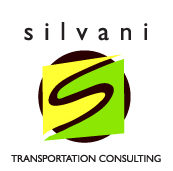First mile shuttles link residents to local and regional transit. Last mile shuttles link employees from local and regional transit hubs to work sites. Longer distance shuttles carry employees who live and work in areas beyond the first and last mile directly between these destinations. There are downtown/retail circulators; school and medical shuttles. Some require an employee ID or clearance to use; others are open to anyone, either officially or unofficially. Nearly all are fare-free.
In mixed use, Transit Oriented Development, the same shuttle serves both “first” and “last” mile customers, which is one reason why they are so efficient. They carry first mile residents to nearby transit hubs or downtown destinations in one direction; last mile employees en route to jobs on the return trip. Medical and other institutional shuttles carry employees in peak commute times; patients and customers throughout the day, which also makes them very efficient.
Shuttles have several intrinsic features which make them highly attractive, flexible and efficient. Among them :
- Routes and stops can quickly be created, implemented and adjusted to serve specific needs
- Hours of operation are also very flexible
- Fare-free shuttles can lower transportation costs for employees, students, and customers; the fare free nature and regular schedules make shuttles both a compelling and ubiquitous mode choice
- Many shuttles can be “right-sized” for a particular need: i.e., using vans or small buses for low-volume needs; larger buses and over-the-highway luxury buses for other purposes.
- Shuttles can offer equivalent “door to door” convenience as driving as well as competitive “total travel time”
Customers appreciate the flexibility to work, read, socialize, or sleep during their commute rather than hassle driving. They like the reduced cost of vehicle ownership (lower insurance, gas, and repairs) as well as lower commuting costs that comes with not driving every day. When it comes to the longer distance (regional) shuttles, they particularly value those attributes as well as the ability to make a 25-75 mile trip in luxurious comfort and without having to make several transfers. Last but not least, they feel safe using this form of public transit.
Institutions, business parks, and employers realize that shuttles are increasingly an important aspect of employee recruitment and retention that not only expands their potential labor pool, but is also tied directly to employee expectations and satisfaction. Most benefit from added productivity from employees working en route. Facilities managers are well aware of the cost savings of not having to build and maintain excess structured or surface parking spaces. Last but not least, shuttles are one of the most effective TDM strategies to reduce single occupant vehicle trips and reduce emissions and other environmental impacts.
Communities served by shuttles also benefit in important ways. Providing free and easy access to and between work, educational, medical and retail destinations increases foot traffic and sales (or attendance, or appointments kept, etc). Establishments within close proximity to bus stops often benefit from increased business, as transit users patronize those local businesses. The need and demand for parking is also reduced, and levels of congestion and emissions at the “neighborhood” level mayalso be reduced.
Demand for shuttles has become so popular and prevalent, many cities (and companies and institutions who provide shuttle services) are becoming concerned. How much service is enough, and what are the impacts, both good and bad?
Keeping up with demand for “more service” is a key challenge for all successful shuttles. Customers who don’t live near a transit hub served by a shuttle – or who live across town and require two or three modes and transfers to make the trip to work – all want a shuttle from their hub or neighborhood to their workplace. Nearly everyone would like service earlier, later, or on weekends. Those on longer distance shuttles would like more runs each day; more pick-up locations and corridors served. People like “door to door” service. In my 20+ years of managing shuttles, I’ve yet to meet someone who wouldn’t like a shuttle stop at the front door or someone transferring at a transit hub to want a bus stop at a main entry point.
There is a perception that shuttles may be competing or even taking business away from traditional public transit. Research shows the opposite is true: people who use shuttles are more likely to also use public transit, walk, bike, and use other modes. Streets and sidewalks in the “public realm” are already constrained, and making way for more shuttles to utilize limited resources is a challenge. In some neighborhoods, there are concerns that large buses are not appropriate; people are concerned about safety, as well as emissions and noise from idling.
The very ability to configure shuttles for a particular purpose or audience – and hence the diversity we’ve seen evolve in the many shapes shuttles take — is the key reason shuttles have become one of the most successful and useful components in our transportation system. With cooperation, coordination, and good communications, successful shuttles can be “win-win” solutions for all.

